The SilverStone Permafrost PF120, PF240, and PF360 ARGB AIO Coolers Review
by E. Fylladitakis on June 17, 2020 10:00 AM EST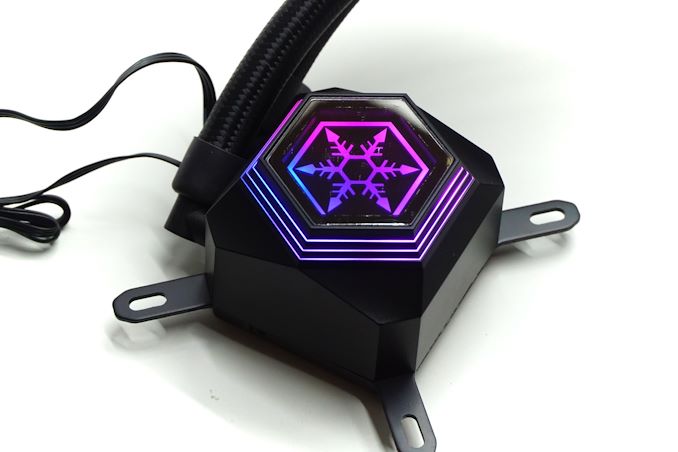
SilverStone is a well-known name amongst advanced users and enthusiasts. The company earned its reputation from its first PSUs and original case designs, and soon diversified towards cooling related products. Their products usually are designed to be cost-effective, with a focus on practicality and quality instead of extravagant aesthetics. That tactic served SilverStone very well in the past, some of their CPU tower coolers have become very good values for the price.
Given SilverStone's success with air coolers, today we are switching tracks to liquid coolers and taking a look at SilverStone’s latest all-in-one (AIO) “Permafrost” cooler series. With multiple models covering the most popular cooler sizes, SilverStone is looking to tap into what has continued to be a popular market for alternative high-performance coolers. And with the inclusion of Addressable RGB (ARGB) lighting, SilverStone is perhaps bowing to a bit to market pressures as well by including RGB lighting in their new AIO coolers.
Altogether, SilverStone has released three Permafrost ARGB AIO coolers: the PF120, PF240, and PF360. As their names suggest, they are designed with radiators that use one, two, or three 120 mm cooling fans respectively. And for today's review, we're going to be looking at all three models.
| SilverStone Permafrost Coolers | |||||
| PF360-ARGB | PF240-ARGB | PF120-ARGB | |||
| Size | 360mm x 120mm | 240mm x 120mm | 120mm x 120mm | ||
| Fan Thickness | 25mm | ||||
| Radiator Thickness | 28mm | ||||
| Fan Noise (Rated) | 7.4 - 35.6 dBA | ||||
| Tube Length | 400mm | ||||
| MSRP | $129.99 | $99.99 | $79.99 | ||
As mentioned previously, all three coolers also incorporate RGB lighting. With RGB being the latest industry trend and considering the significant market slice that it currently holds, it seems that SilverStone could not afford to not have RGB-related products available. Thankfully, however, unlike so many vendors, SilverStone isn't treating the inclusion of RGB lighting at a justification for charging high prices. So while these new coolers aren't budget products by any means, their retail price is not forbidding, making them an enticing option for enthusiasts that wish to combine aesthetics and performance while on a budget.
Packaging & Bundle
SilverStone supplies their new Permafrost series coolers in sturdy cardboard boxes that, along with the internal custom inserts, provide excellent shipping protection. The artwork on the packaging is simplistic, focused on pictures of the coolers themselves – still, that is more than enough for catching the eyes of shop shelf browsers.
All three coolers share the exact same bundle, with the sole exception being the number of fans and their wiring. Inside the box, we found the necessary mounting hardware, a small syringe with thermal paste, the necessary power and LED wiring, and an ARGB lighting controller.
Meanwhile the ARGB LEDs of all three coolers are compatible with most motherboards featuring controllable RGB lighting. On compatible systems, the LED wiring of the AIO cooler can be attached directly to the motherboard, which directly controls the RGB lighting of the cooler via the software each motherboard manufacturer provides.
And while SilverStone does include a stand-alone ARGB controller as well, it's really meant to be used as a fallback option – to manually setup lighting effects with systems that do not have a compatible motherboard. It features several pre-programmed RGB lighting effects, as well as speed and brightness options, but it certainly is not convenient to open up the case each time one wants to change any lighting setting. These coolers are definitely meant to be used with compatible motherboards, where the control is performed via software.
Depending on the version of the SilverStone PF ARGB cooler, you will receive one, two, or three 120 mm fans for their radiator. SilverStone supplies their APA1225H12 fans, which are identical to the Air Blazer 120 fan that the company markets as a stand-alone item. These fans feature a Hydro bearing engine for low noise and anti-vibration mounting pads. The nine narrow fins suggest that the fan is designed for high flow and low pressure, which should be fine considering the relatively thin radiators.


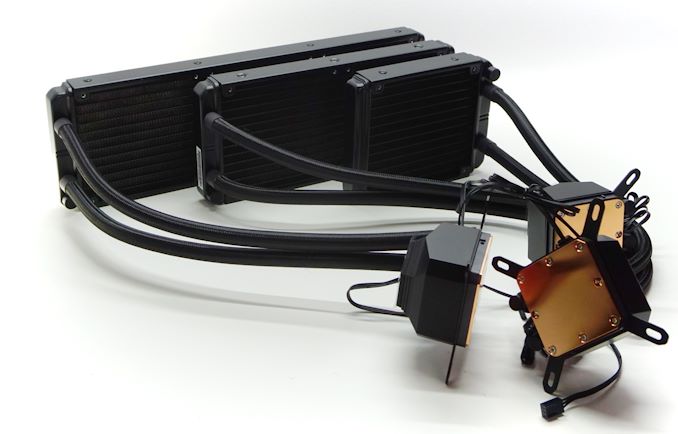
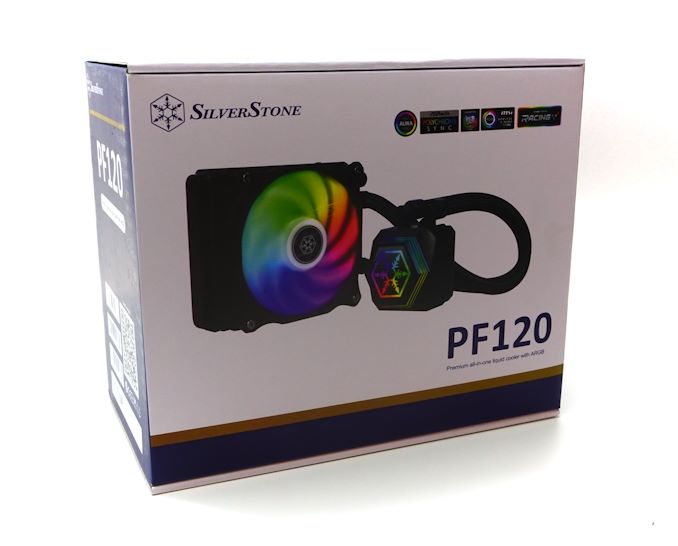
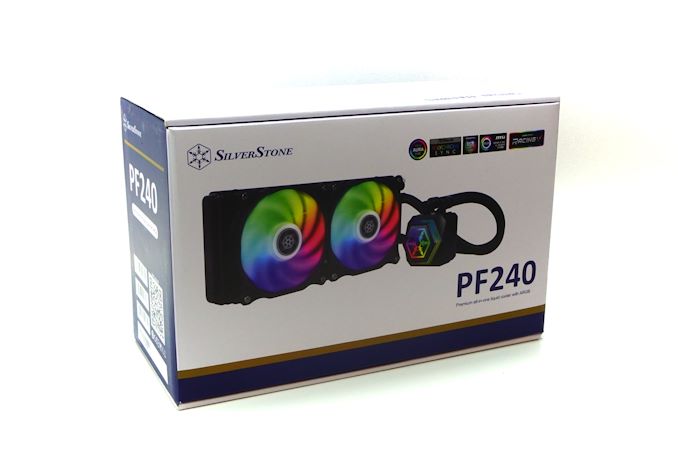
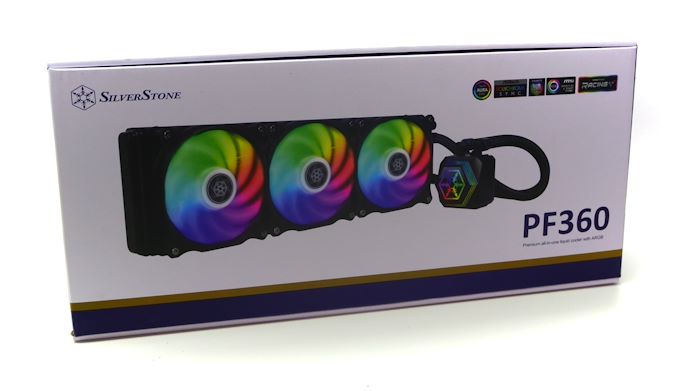
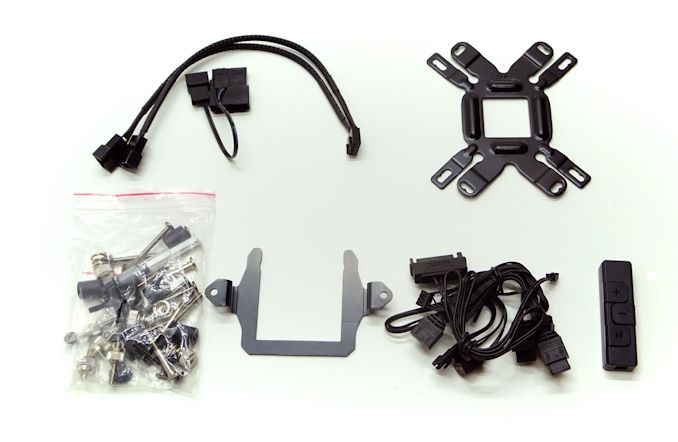
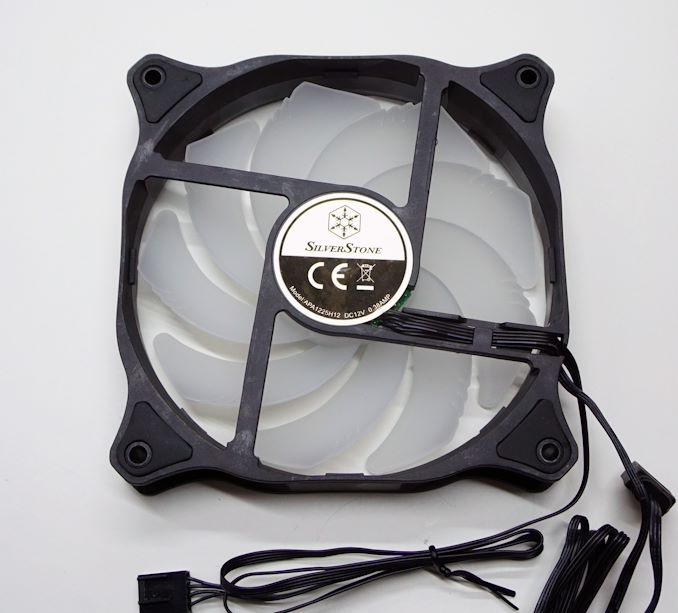








71 Comments
View All Comments
close - Thursday, June 18, 2020 - link
On topic: I'd still go with air on any system I plan to keep for a while. I have plenty of machines still operating just fine after close to a decade, I don't want to tempt fate with a liquid loop.Off topic, Germans don't seem to believe in A/Cs mounted on the outside of every building and the A/C noise that all neighbors have to live with. And I remember years ago my neighbor's A/C unit (not in Germany) keeping me awake at night because that hum and vibration would be heard and felt best in my bedroom. Also Germany wasn't the hottest, most humid of countries when they came up with the policies.
PeachNCream - Thursday, June 18, 2020 - link
Seattle has that same sort of problem. It only gets hot enough to really warrant AC a few weeks out of the summer during a typical year so most residential construction and some business structures lack air conditioning. The only time its a problem is for those few weeks of summer and when there is an unusual heat wave, but while living there, the point of keeping a PC that doesn't generate a lot of heat or require extensive cooling was sort of reinforced. My desktop made my bedroom feel warmer but my netbook was insignificant. It should be no surprise that I figured out how to stay connected, amused, and busy on just an Atom n270 at that point. :)khanikun - Friday, June 19, 2020 - link
I normally just go air for my non-main rig. One is a file server and just sits there, while the other is a backup gaming rig. That one usually just sits there too and I play videos on it, while gaming on my other machine.I think AIOs are fine, so long as you aren't constantly tinkering around in your machine. The more you mess with it, the more likely something on it might fail and cause leaking. Why I have them in my computers that I don't mess with much and have a custom on my main rig. The custom is a much more robust setup.
As for Germans and A/C, ya. They didn't bother with it, since it really wasn't all that hot and didn't last long. A fan would suffice, but with everywhere being hotter nowadays, people are definitely rethinking it. The last 3 years I was there, every summer the portable A/C units were sold out for the whole season. Peak heat only lasted like 2 weeks, then over time that changed. Went from 2 weeks to a month. Then a 1 1/2 months. Was also getting close to 100F.
Slash3 - Thursday, June 18, 2020 - link
I love how the top two best results in every graph on that page are air coolers.Slash3 - Thursday, June 18, 2020 - link
Haha, hoist by my own petard. They're all air coolers in those graphs.Flunk - Monday, June 22, 2020 - link
Not really, it's just dependant on the size of the radiator. AIOs can be made with later radiators than tower coolers, but it doesn't make AIOs magically better. It's just a matter of how much heat dissipation surface you have. If you get the heat there with heat pipes or pumped liquid is largely irrelevant.hansmuff - Wednesday, June 17, 2020 - link
Repeat after me: there are other benefits and they are worth it to some.eek2121 - Wednesday, June 17, 2020 - link
Baseless argument. I have been using AIOs for a long time and have never had a leak. One of my units is 6 years old and is used daily.WaWaThreeFIVbroS - Wednesday, June 17, 2020 - link
That doesn't mean others never had their AIOs leaked, my AIO leaked and broke the GTX 980 beloe it, never againPeachNCream - Thursday, June 18, 2020 - link
A single digit sample size does not make for reliable data on a statistical level so claims either for or against leak risks would really need a broader collection of data than we have the ability to gather here. That's why I don't really comment much on leaks aside from pointing out we haven't the right information. As far as I'm concerned, other more obvious factors are worth consideration beyond leaking or not leaking (though I do feel for someone losing expensive hardware due to a leak - kinda sucks).